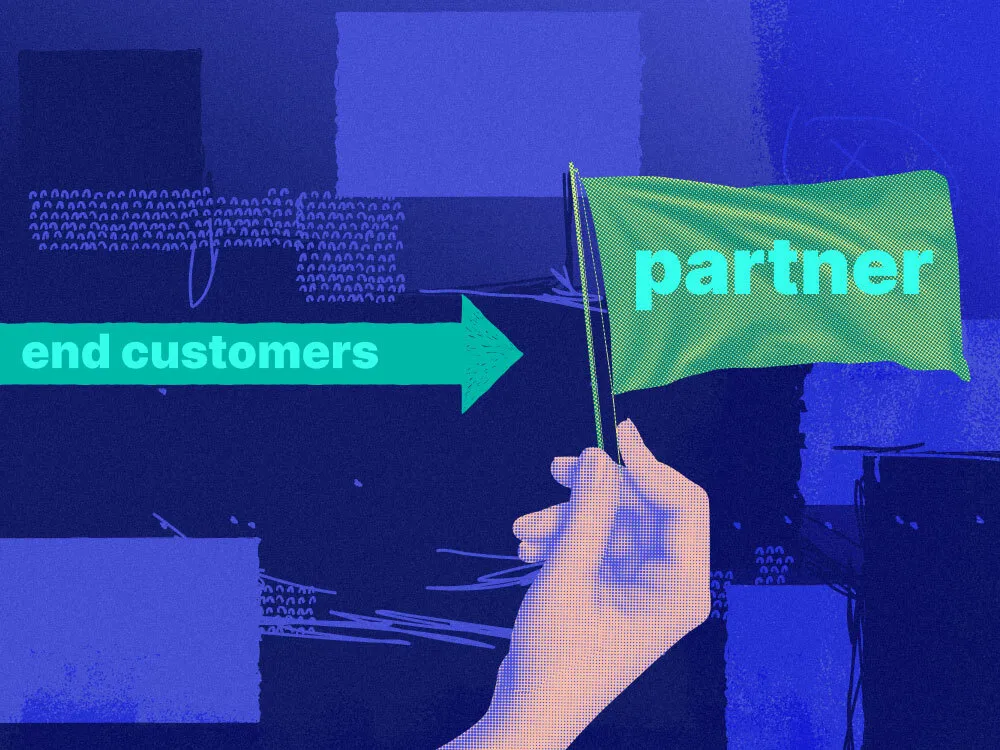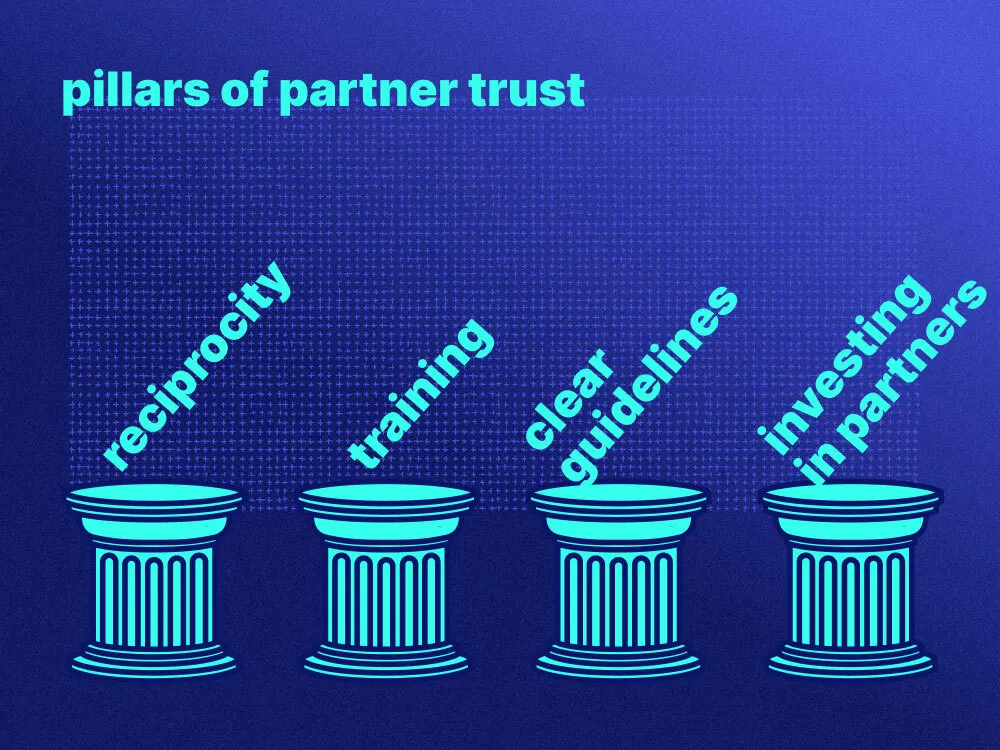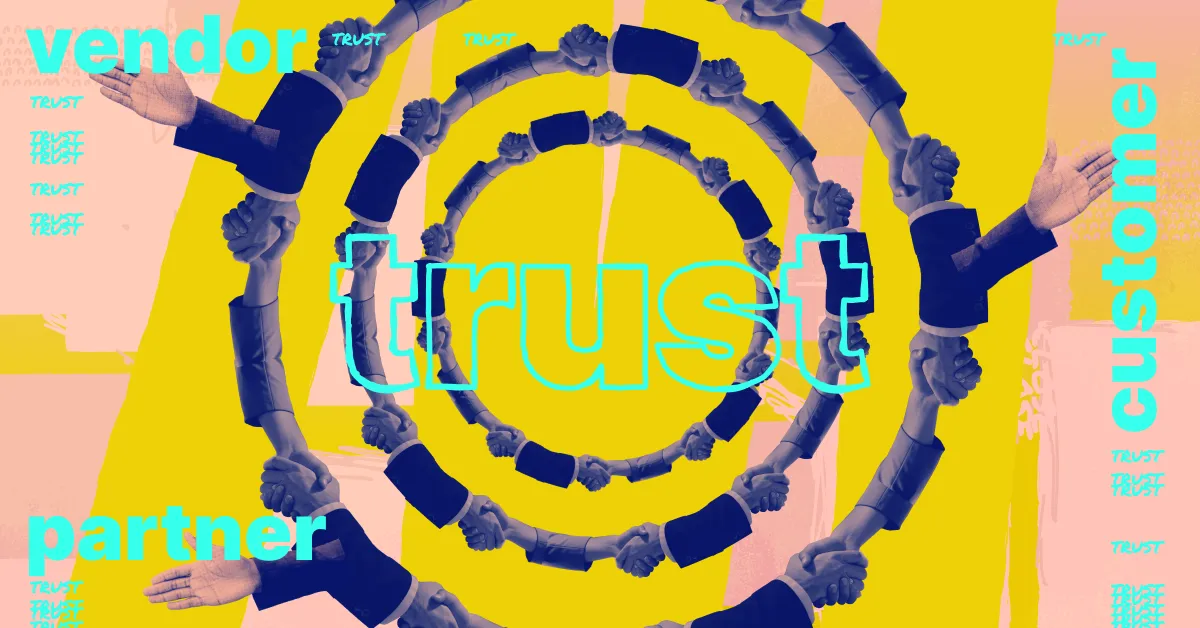SaaS sales has high highs and low lows.
When your team is in a low low, it feels like there’s not much you can do about it. Waiting it out isn’t necessarily a sound strategy; it’s just how the market goes, right?
Right — if you’re not sitting on GTM gold. The gold? Partners.
Partners already have an “in” with the prospects you want to target. They’ve built up their audience and nurtured their customers for months or even years. And if your channel relationships are good enough, you could be tapping into their market and closing big deals — right now.
But going all in with partners doesn’t just happen. Building a partner-led motion takes a concerted effort and, most of all, trust.
With the help of PartnerStack’s Director of Demand Generation, Joe Kevens, we explain what partner-led means, the importance of trust in channel relationships and how to deepen that trust to win more business — even in what feels like a drought.
Defining the partner-led motion
If you’ve been around the SaaS world for a while, chances are you’ve heard an [insert department]-led term before. All it really means is that the word before “-led” is what’s driving a company’s growth.
Product-led growth, for instance, puts product at the heart of a company’s go-to-market motion — the product itself acts as a lead magnet for end users. As they use the product, it becomes an integral part of their workflow and they encourage their peers to leverage it in their work, too. In an ideal world, gaining a critical mass of those users leaves IT and procurement no choice but to sign an enterprise contract.
In many respects, a partner-led motion behaves similarly. Kevens explains, “A partner-led motion puts all indirect sales tactics at the center of a company’s GTM strategy.”
In a product-led motion, channel partners, affiliates, distribution channels, resellers, referrals and integrations all effectively become your lead magnets. They already have happy customers and warm prospects in their network that they can:
- Sell your product to directly
- Co-sell into with you
- Pass over to your sales team to close themselves
Because of the strong relationships partners already have with your potential customers, solid channel relationships tend to: (1) fill your pipeline faster and (2) boost your chances of closing a deal.
Why go partner-led?
For years, SaaS businesses have tried to grow at all costs, recruiting and onboarding huge SDR (sales development representatives) teams, pumping money into ads, experimenting with social media. But right now, they can’t afford to hope that one of those strategies sticks.
According to a report by Pavilion and Ebsta, 69 per cent of reps have missed their quarterly quotas in 2024. A recent GTM Partners survey found that 82 per cent of companies reported a significant slowdown in their sales velocity.
With sales stalling, companies must make the switch to profitability — and fast. Part of that transition is identifying areas of efficient growth. And the numbers have consistently proven that partnerships are that channel. GTM Partners reports a:
- 46% higher win rate for partner-sourced deals
- 99% higher win rate for partner-influenced deals
- 11% shorter time to close for partner-sourced deals
Pavilion’s data reflects channel relationship efficiency, too. While partners account for just 10 per cent of sourced pipeline, they lead to 31 per cent of revenue for top performing sales reps.
Kevens explains, “A lot of leaders sleep on partnerships because of the upfront time it takes to spin them up. But once you’ve got a program built out, partnerships can be a very performance-driven channel.”
That’s because partners have something very valuable: end user trust.
The role of trust in B2B sales
Partners drive business outcomes because of the trust that B2B buyers have in them — and the weight of that trust is huge.
In a survey of 400 B2B SaaS leaders, 16 per cent trusted indirect information sources (references, partners, marketplaces) over direct information from a vendor (a company’s website or a booked sales meeting).
It makes sense. Just think back to the last time you bought a new tool.
During your evaluation, what would’ve meant more: a rep sharing an out-of-this-world case study or a consulting firm you’ve used before telling you about two of their customers who had successful implementations and are gaining big returns in productivity?
Probably the latter — you trust your partner’s opinion. As Kevens says, “Indirect sources like partners work because they want to preserve the relationship they have with their clients and are going to tell them the truth. If they believe in a product, that’s an instant green flag to a potential customer.”

Harness potential customer trust by building deep channel relationships
This is a little meta, but the way you access the trust partners have with potential customers is to win channel partners’ trust yourself. The more partners trust you and your product or services, the more comfortable they feel making a direct sale or recommendation.
Per Kevens, “Enablement and engagement should be the North Star of a product-led motion because that’s what leads to deep trust.” In actionable terms, this means:
Giving before getting
A true partnership isn’t one-sided. You can’t expect to build trust with partners if all you’re doing is asking for leads. You need to give them something they want, too. That could be more brand exposure, more marketing dollars or more leads.
Figure out your partners’ business goals and find ways to help them hit their KPIs. Doing this isn’t just a good karma exercise; it’s keeping your product or service top of mind so partners remember to recommend it or initiate a direct sale to qualified prospects.
Creating an effective training program
Partners can’t sell or recommend your product or service if they don’t know what it does or why it’s so great. Form a robust training and certification program to review use cases, value props and objection handling. To maximize efficiency, consider putting this training in a partner-facing portal so that it’s accessible to them anytime, anywhere.

Establishing clear commission guidelines
You can quickly lose trust with partners if you’re not paying them what they think they’re owed. To minimize frustration or confusion, outline your commission structure, review it with partners one-on-one and make it readily accessible in your portal.
Put your money where your mouth is
Be ready to invest in your partners’ success, whether through marketing development funds, joint events, in-person strategy sessions or SPIFFs. And respect your partners by paying them on time. Work with your finance team to set reasonable SLAs for partner payouts and stick to them! Every time you keep a promise, you earn more channel partner trust.
See more: Effective strategies for managing channel partners.
Sustain trust with an operationalized partner program
Getting all your partner program ducks in a row is a challenge. But without a way to keep in touch with partners, disseminate resources, certify partners, collect leads and monitor timely payouts, partners won’t be motivated or trained to sell through the channel — let alone feel a sense of trust.
A solid partner relationship management system is the best way to get your partner-led motion on track and maintain healthy, ongoing (and lucrative!) channel relationships.
PartnerStack has all the features you need to power your partner ecosystem. Book a demo to jumpstart your partner-led motion today.

















